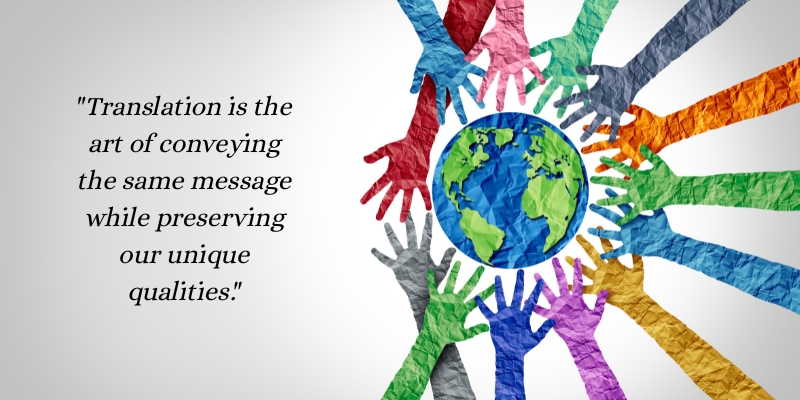In an increasingly interconnected world, translation not only facilitates communication but also plays a crucial role in preserving and transmitting cultural identities. In 2025, translators face the challenge of balancing faithfulness to the original text with cultural adaptation, in a context where technology, particularly artificial intelligence (AI), is transforming the profession.
Translation as a Cultural Bridge
Every language carries a unique worldview. Expressions, sayings, and linguistic structures reflect the experiences and values of a community. Therefore, translation is not merely about transferring words from one language to another; it is about capturing the deeper meaning those words convey.
For example, when translating literature, a translator must consider not only the literal meaning, but also the emotions and atmosphere the author intended to express. The identity of a culture can easily be lost if translations are done mechanically, without understanding the historical and social context of the original text.
The Impact of AI on Translation and Identity
AI is now deeply integrated into the field of translation. Tools such as DeepL and ChatGPT can process large volumes of text in seconds, providing highly accurate results for technical texts and simple communications. However, these tools often lack the cultural sensitivity needed to preserve cultural identity in more complex texts.
Simultaneous interpretation has also been influenced by AI, with devices capable of delivering real-time translations. While these advances are useful for casual conversations or global events, they often fail to capture cultural or emotional nuances that are crucial in political, religious, or artistic speeches.
The Role of Human Translators
Despite technological advancements, human translators remain indispensable for ensuring that meaning and cultural identity are preserved throughout the translation process. This is especially critical in content localization, where translators adapt advertising campaigns, websites, or video games for specific markets, respecting local cultural sensitivities.
For instance, an advertising campaign that is effective in the United States may require significant adjustments to resonate in countries like Japan or Brazil, where cultural norms and values can differ greatly.
Conclusion
In 2025, translation is much more than a linguistic act; it is a bridge between cultures and a tool for preserving diversity in a globalized world. While AI is reshaping the speed and accessibility of translation, human translators play a vital role in safeguarding cultural identity.
The key to the future of the profession lies in combining the efficiency of technology with human sensitivity and understanding, ensuring that every translation is not only accurate, but also deeply meaningful.




